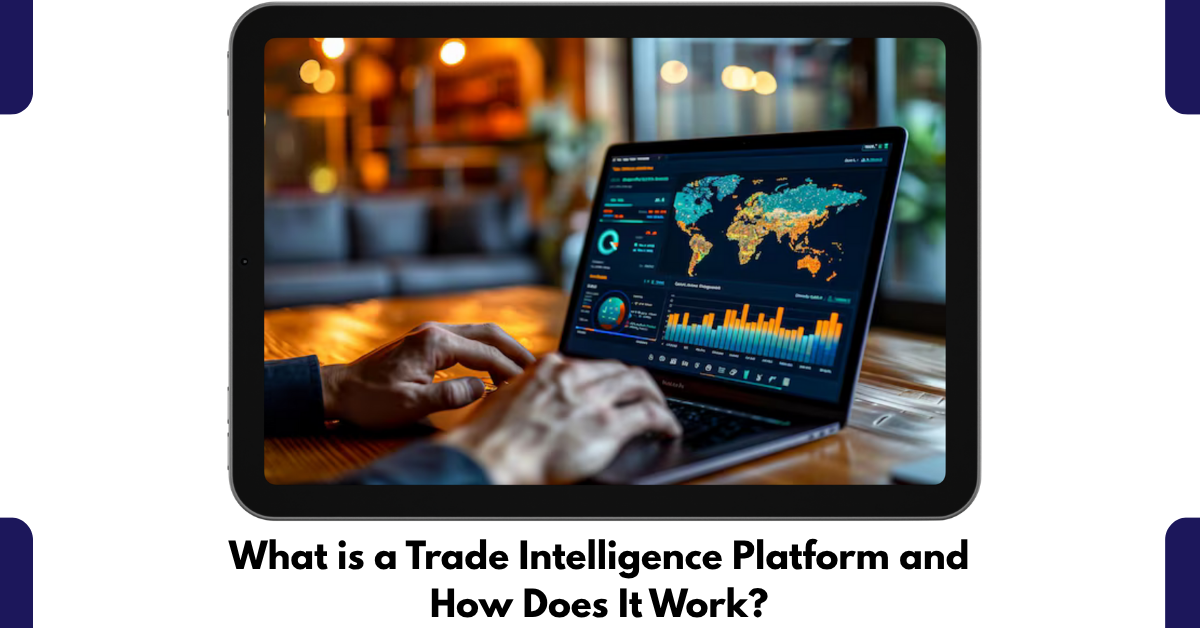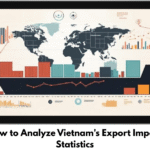Understanding the Evolution of Global Trade Insights
In the dynamic global trade ecosystem, access to live trade statistics has become the basis of making strategic business choices. With growing global trade, organizations from various sectors are turning more and more towards cutting-edge solutions such as the Trade intelligence platform India to analyze, forecast, and take action based on shifting market patterns. Firms no longer rely on guesswork; they rely on data-driven insights that provide certainty in the face of uncertainty.
Trade intelligence platforms have redefined how importers, exporters, logistics providers, and policymakers interpret global trade flows. Whether you’re an emerging startup or a multinational enterprise, leveraging a trade data platform can mean the difference between stagnation and success. These platforms empower businesses to uncover emerging markets, assess competition, track supply chain movements, and forecast potential growth opportunities—all with the power of precise, actionable intelligence.
The Emergence of Trade Intelligence in the World Economy
Information is the lifeblood of the global economy. Each shipment, export authorization, and import declaration contains valuable intelligence that, when compiled, provides a rich picture of patterns of trade. This is exactly where sites such as Trade Intelligence Global Co. LTD and Trade Data Pro make their presence felt.
These systems integrate millions of customs, port authority, and logistics networks around the world into one system. To create an integrated, searchable database that offers a 360-degree view of global trade movements. The new trade intelligence platform doesn’t merely gather information; it turns it into business insight.
In India, the use of such digital trade tools has picked up considerably. Firms presently employ the Trade intelligence platform free version for rudimentary analysis and switch to paid versions for detailed, predictive analysis. Such tools are no longer a monopoly of large corporations; even small and medium enterprises and entrepreneurs are finding the competitive edge they provide to market planning and risk management.
How a Trade Intelligence Platform Works
Fundamentally, a trade data platform is an advanced data engine that collects, processes, and displays trade information. Here’s the way it normally works:
1. Data Collection and Aggregation
A trade intelligence platform gathers information from various official and non-official sources—customs databases, shipping documents, bills of lading, port authority records, and foreign trade registries. Sites such as Trade Vision India and Trade Intelligence Global Co. LTD utilize sophisticated algorithms to cleanse, classify, and compile the information into a uniform format.
2. Data Analysis and Pattern Recognition
After the data has been processed, the system then uses analytical models to identify concealed patterns and relationships. These revelations display trading volumes, price trends, supplier connections, and even competing firm actions. For example, via the Trade Vision login, customized dashboards of trade activity by nation, product category, or firm name are accessed by users.
3. Visualization and Reporting
The actual power of a trade intelligence platform is its potential to turn raw data into visual intelligence. The users can create charts, heatmaps, and predictive models that refine intricate trade relationships. Trade Data Pro and other such platforms offer interactive dashboards where decision-makers can filter and refine views in line with particular goals.
4. Real-Time Alerts and Decision Support
Where market dynamics are in constant flux, timing matters. Advanced systems provide immediate notifications regarding tariff fluctuations, supply chain interruptions, and competitor shipments. This forward-thinking capability keeps companies ahead of the curve, minimizing risks and taking advantage of opportunities before they arise.
Why Companies Require Trade Intelligence Platforms
1. Improving Market Visibility
In today’s competitive world of a global marketplace, access to original trade data provides a strategic advantage to organizations. A trade intelligence platform India solution helps an organization know who is trading what, where, and with whom. This information assists companies in breaking into new markets, understanding competitors, and streamlining export-import strategies.
2. Empowering Supply Chain Management
One of the largest benefits of sites such as Trade Data Pro is that they can automate supply chain visibility. Businesses may monitor shipments in real time, find trusted suppliers, and predict possible bottlenecks. For businesses that use international sourcing—such as manufacturing, auto, and pharmaceuticals—this feature is invaluable.
3. Making Compliance and Risk Management Easier
Trade is regulated by a maze of rules. A solid trade data platform keeps companies compliant with customs regulations, trade tariffs, and regulatory requirements by country. By automating checks for compliance, such platforms avoid expensive penalties as well as shipment delays.
4. Data-Driven Business Expansion
Availability of accurate trade information presents the key to strategic growth. For example, a business intending to grow into the Southeast Asia market can utilize the Trade intelligence platform free version to conduct trade volume analysis and determine high-demand products. Upgrading to the paid version provides them with more insights, such as competitor prices, buyer contact information, and import trends—converting data into strategy.
The Role of Technology in Trade Intelligence
Today’s trade intelligence platforms work at the confluence of data science, artificial intelligence, and automation. Next-generation AI models make predictive analytics possible, empowering companies to predict market changes before they happen. Cloud-based infrastructures enable accessibility of tools such as Trade Vision India and TradeInt login from anywhere in the world, so global teams can collaborate in real-time.
Blockchain integration is another groundbreaking feature that is being embraced by top platforms like Trade Intelligence Global Co. LTD. By providing data immutability and transparency, blockchain technology is adding to the integrity of trade records and minimizing fraud or manipulation risks.
In addition, machine learning algorithms continually improve the precision of trade predictions, providing users with more pointed insights into demand-supply relationships. Such technology-driven improvement means that new-generation trade intelligence solutions are not only reactive but predictive and proactive.
A Case in Point: Revolutionizing Trade Strategies
Take the example of an Indian manufacturing company looking to increase exports of consumer electronics. Without a trade intelligence tool, finding potential foreign buyers or determining competitive prices would take months. With Trade Data Pro or Trade Vision login, the company has instant access to thousands of target-country import records, spotting potential distributors and knowing their buying habits.
This understanding enables the company to customize its marketing strategy, optimize pricing, and build direct trade relationships—all fueled by actionable insights. Export volumes increase, operational risk decreases, and profitability lifts within months.
This true story highlights the power of a trade intelligence platform India solution to transform information into an asset that fuels tangible business outcomes.
The Future of Trade Intelligence Platforms
The future of trade intelligence is just around the corner. With increasingly interconnected and digitized global supply chains, the need for real-time, transparent, and predictive trade data will explode. Next-generation Trade Intelligence Global Co. LTD, Trade Vision India, and Trade Data Pro are likely to incorporate even more sophisticated features—like AI-powered negotiation, customs automation, and carbon footprint tracking for environmental sustainability monitoring.
In addition, with governments and trade associations embracing digital trade documents systems, data availability will increase even more, rendering trade intelligence platforms essential tools for all serious business players.
Conclusion: Enabling Global Trade Through Data
The digital era has brought with it a new age of transparency, speed, and intelligence in global trade. A trade data platform is no longer a luxury—it’s a necessity for organizations that want to operate across global markets cost-effectively.
By combining technology and data-driven analysis, platforms such as Trade Vision India, Trade Data Pro, and Trade Intelligence Global Co. LTD enable businesses to make better, quicker, and more informed decisions. Accessible through either TradeInt login or Trade intelligence platform free trial, these resources unleash the immense potential locked inside global trade data.
In an age where the line between success and failure can be drawn in terms of access to reliable intelligence, the potential of a trade intelligence platform is self-evident—it doesn’t merely monitor trade, it revolutionizes it.



